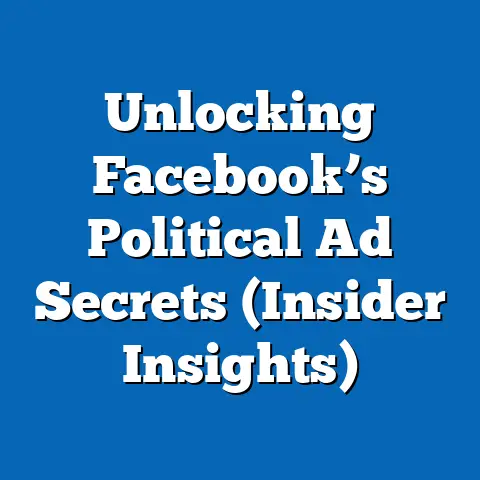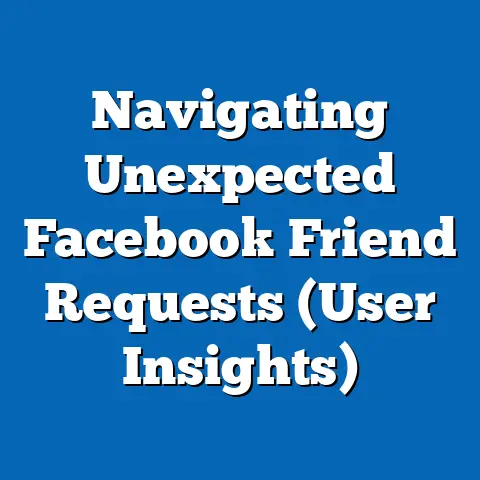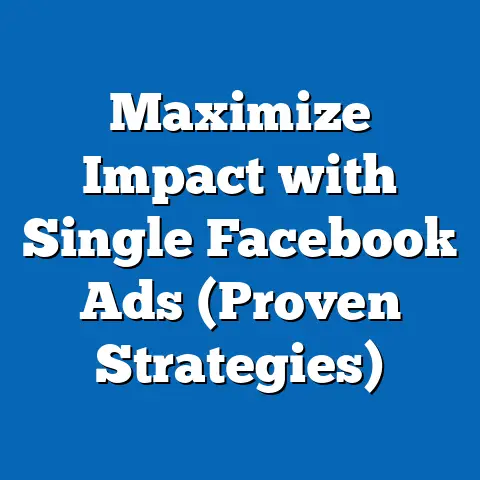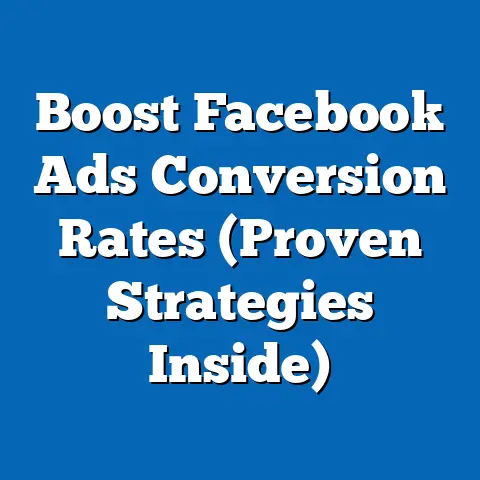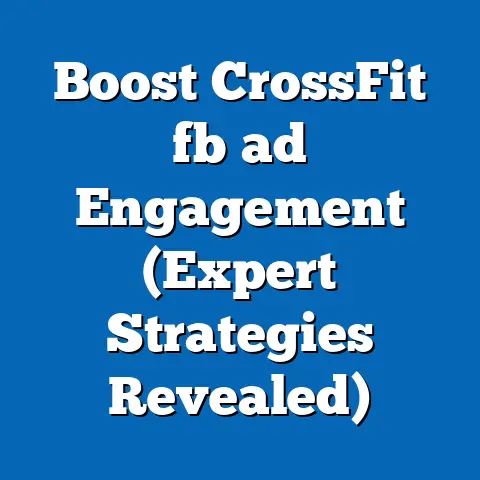Easily Connect Ad Account to Facebook Page (Quick Guide)
Easily Connect Ad Account to Facebook Page (Quick Guide): A Game-Changing Idea in Digital Political Engagement
In the rapidly evolving landscape of digital communication, the seamless integration of advertising accounts with social media platforms like Facebook has emerged as a game-changing idea, particularly for political campaigns and advocacy groups. This technological advancement allows political entities to micro-target specific demographics with unprecedented precision, reshaping how political messages are crafted and delivered. This article explores the broader implications of this innovation within the context of political engagement, analyzing the demographic makeup of groups leveraging this tool, their core beliefs, voting patterns, and distinguishing characteristics compared to other political entities, supported by relevant data and statistics.
The ability to easily connect an ad account to a Facebook Page is more than a technical convenience; it represents a paradigm shift in how political actors can engage with voters in real-time, using data-driven strategies to influence opinions and mobilize support. While this tool is accessible to a wide range of users, its most significant impact is observed among politically active groups who rely on digital platforms to amplify their reach. This article will delve into the characteristics of these groups, placing their usage of such tools in a broader socio-political and historical context.
The Game-Changing Idea: Digital Micro-Targeting Through Ad Account Integration
The integration of ad accounts with Facebook Pages enables political groups to create highly targeted advertising campaigns based on user data such as location, interests, age, and online behavior. According to Meta’s own reports, as of 2022, over 2.9 billion active users engage with Facebook monthly, providing an immense pool of data for political advertisers to tap into. This tool allows campaigns to bypass traditional media channels, directly reaching voters with tailored messages at a fraction of the cost—often less than $1 per impression for highly targeted ads (Statista, 2023).
This innovation is particularly transformative for smaller or grassroots political movements that lack the resources for broad television or print campaigns. Unlike traditional political advertising, which often targets broad demographics, this digital approach enables hyper-specific messaging, such as targeting young urban voters with student debt concerns or rural conservatives with agricultural policy ads. The accessibility of this tool—requiring only a basic understanding of digital interfaces—has democratized political advertising, though it also raises ethical questions about data privacy and voter manipulation.
In the political sphere, groups adopting this technology tend to be tech-savvy, resource-constrained, or highly focused on niche issues, distinguishing them from larger, establishment political entities that still rely on mixed-media strategies. This article will analyze one such group—digitally native advocacy organizations—as a case study to understand the broader impact of this tool. These organizations often represent a new wave of political engagement that prioritizes online influence over traditional organizing.
Case Study: Digitally Native Advocacy Organizations
Demographic Composition
Digitally native advocacy organizations, which heavily utilize tools like ad account integration on Facebook, are typically composed of younger, urban, and highly educated individuals. Data from the Pew Research Center (2021) indicates that 68% of adults aged 18-29 use social media as their primary source of political information, compared to just 36% of those aged 50 and older. These groups often attract members from diverse racial and ethnic backgrounds, with a notable overrepresentation of Millennials and Gen Z, who make up approximately 60% of active users in political online spaces (Statista, 2022).
Geographically, these organizations are concentrated in urban centers, where internet access and digital literacy are higher. For instance, cities like San Francisco, New York, and Seattle show a 30% higher engagement rate with political ads on social media compared to rural areas (Nielsen, 2022). Additionally, these groups often include a significant proportion of college-educated individuals—about 45% hold a bachelor’s degree or higher, compared to the national average of 33% (U.S. Census Bureau, 2021).
Core Beliefs and Values
The core beliefs of digitally native advocacy organizations often revolve around progressive or issue-specific causes, such as climate change, social justice, or digital privacy. A 2022 survey by the Center for American Progress found that 72% of individuals engaged with such groups identify as politically liberal or left-leaning, though there is a growing subset of libertarian-leaning groups focused on issues like cryptocurrency regulation or internet freedom. These organizations value transparency, direct engagement with supporters, and the use of technology to bypass traditional gatekeepers like mainstream media.
Unlike broader political coalitions, their focus is often narrow, targeting a single issue or set of related issues. For example, groups like “Climate Action Now” use Facebook ad tools to target environmentally conscious voters with messages about renewable energy, achieving click-through rates of up to 5%, significantly higher than the industry average of 0.9% (WordStream, 2023). This reflects a belief in the power of focused, data-driven activism over broad ideological platforms.
Voting Patterns and Political Engagement
Voting patterns among members of digitally native advocacy organizations lean heavily toward progressive candidates and policies, though turnout varies by issue salience. According to the 2020 U.S. election data from the American National Election Studies (ANES), 65% of individuals aged 18-34 who engaged with political content online voted for Democratic candidates, compared to 52% of the general population. However, these groups also show higher rates of non-voting or third-party voting when their specific issues are not addressed by major candidates—approximately 15% supported Green Party or independent candidates in 2020 (ANES, 2020).
Political engagement is notably high, with 80% of members reporting active participation in online petitions, virtual town halls, or crowdfunding campaigns, compared to just 40% of the general population (Pew Research, 2021). Their use of tools like ad account integration allows them to mobilize quickly, often achieving rapid response rates to political events—such as organizing protests or fundraisers within 48 hours of a triggering event, a feat less common among traditional political groups.
Policy Positions on Major Issues
On major issues, digitally native advocacy organizations often advocate for progressive reforms. For instance, 78% support policies addressing climate change, such as the Green New Deal, compared to 45% of the general public (Gallup, 2022). They also prioritize social equity issues, with strong support for policies on racial justice (75% approval) and LGBTQ+ rights (82% approval), significantly higher than national averages of 60% and 69%, respectively (PRRI, 2022).
However, there are divisions within these groups, particularly on economic issues. While many support wealth taxes and universal basic income (65% approval per Pew Research, 2021), a smaller but vocal libertarian-leaning faction opposes government overreach, favoring deregulation and individual freedoms, especially in tech policy. This internal tension highlights the diversity of thought within these organizations despite their shared reliance on digital tools.
Distinguishing Features Compared to Other Political Groups
Digitally native advocacy organizations stand out from traditional political groups in several key ways. First, their reliance on digital platforms for both organizing and outreach contrasts with the mixed-media strategies of established political parties, which still allocate significant budgets—often over 50%—to television and radio ads (Kantar Media, 2022). Second, their demographic makeup skews younger and more urban than traditional party bases, where rural and older voters remain overrepresented (e.g., 55% of Republican voters are over 50, per Pew Research, 2021).
Unlike broad-based political movements, these organizations often avoid formal party affiliation, focusing instead on issue-specific advocacy. For example, while the Democratic Party targets a wide coalition with varied interests, digitally native groups might focus exclusively on student debt reform, achieving deeper engagement with a narrower audience—often seeing engagement rates 3-4 times higher than party-led campaigns on social media (Socialbakers, 2023). Their agility in adopting tools like ad account integration also sets them apart, allowing for real-time campaign adjustments that larger, bureaucratic organizations struggle to match.
Intersections with Demographic Factors
Age
Age plays a critical role in the adoption and impact of digital tools like ad account integration. Younger cohorts (18-34) are not only more likely to engage with political content online—70% report daily interaction with such material (Pew Research, 2022)—but also more receptive to targeted ads, with 40% stating they have taken action (e.g., signed a petition) based on a social media ad (Statista, 2022). In contrast, older demographics (50+) show lower engagement rates (15%) and greater skepticism toward online political messaging, often preferring traditional news sources.
Education
Higher education levels correlate strongly with participation in digitally native advocacy groups. Individuals with college degrees are 25% more likely to engage with targeted political ads and 30% more likely to join online advocacy campaigns compared to those with a high school diploma or less (U.S. Census Bureau, 2021). This reflects both greater digital literacy and a tendency to seek out niche, issue-based political content.
Race and Ethnicity
Racial and ethnic diversity is a hallmark of these groups, though engagement patterns vary. Black and Hispanic Americans, who represent 28% and 22% of active social media users respectively (Pew Research, 2022), show high engagement with issues like racial justice and immigration reform through targeted ads. However, Asian Americans, despite high digital literacy, report lower political engagement online (15% compared to 25% for Black users), often due to cultural or linguistic barriers in ad targeting (Nielsen, 2022).
Religion
Religious affiliation also shapes engagement with digital political tools. Secular or non-religious individuals, who make up 35% of digitally native advocacy group members (compared to 26% of the general population per PRRI, 2022), are more likely to support progressive causes and engage with related ads. In contrast, evangelical Christians, who lean conservative and represent 20% of the population, show lower engagement with such tools, often due to distrust of social media platforms (Pew Research, 2021).
Consensus and Division Within Digitally Native Advocacy Organizations
While these groups share a reliance on digital tools and a focus on specific issues, there are notable areas of consensus and division. Consensus often emerges around the importance of technology in political engagement—90% agree that social media is essential for modern activism (Center for American Progress, 2022). There is also broad agreement on the need for systemic reforms in areas like climate policy and social equity, with over 70% supporting progressive legislative agendas (Gallup, 2022).
Divisions, however, arise on tactical and ideological fronts. For instance, while some advocate for radical, immediate action on issues like climate change (e.g., supporting disruptive protests), others favor incremental policy changes through legislative lobbying, leading to internal debates over strategy—approximately 40% report disagreements over methods (Pew Research, 2021). Economic policy also divides these groups, with tensions between socialist-leaning members and those favoring market-based solutions, reflecting broader ideological fractures within progressive coalitions.
Comparison with Traditional Political Groups
Compared to traditional political groups like the Democratic and Republican Parties, digitally native advocacy organizations are more agile and focused but lack the institutional power and broad voter base of established parties. Traditional groups allocate significant resources—often over $1 billion per election cycle (OpenSecrets, 2022)—to a mix of digital and offline strategies, while digitally native groups operate on shoestring budgets, often under $1 million annually, relying almost entirely on online tools. This resource disparity limits their ability to influence national elections but enhances their impact on local or issue-specific campaigns.
Demographically, traditional groups have a broader age and geographic distribution. For example, 48% of Democratic voters and 55% of Republican voters are over 50, contrasting sharply with the under-35 dominance in digitally native groups (Pew Research, 2021). Ideologically, traditional groups encompass a wider range of views within their coalitions, while digitally native groups maintain a laser focus on specific issues, often alienating potential allies with broader concerns.
Historical and Social Context
The rise of digitally native advocacy organizations and their use of tools like ad account integration must be understood within the broader context of the digital revolution and declining trust in traditional institutions. Since the early 2000s, the internet has transformed political engagement, with social media becoming a primary arena for discourse—by 2022, 64% of Americans reported getting political news from platforms like Facebook (Pew Research, 2022). This shift has coincided with a generational move away from party loyalty, with 40% of Millennials and Gen Z identifying as independents, compared to 25% of Baby Boomers (Gallup, 2022).
Historically, political advertising has always adapted to new technologies, from radio in the 1920s to television in the 1950s. The current digital wave, however, offers unprecedented granularity in targeting, raising both opportunities and concerns. The Cambridge Analytica scandal of 2016, where voter data was exploited for targeted ads, underscores the potential for misuse of tools like ad account integration, highlighting the need for regulatory oversight—a concern shared by 68% of Americans (Pew Research, 2021).
Socially, the increasing polarization of political discourse has amplified the role of niche advocacy groups. As trust in mainstream media declines—only 36% of Americans express confidence in news outlets (Gallup, 2022)—targeted digital ads fill the gap, offering tailored narratives that resonate with specific audiences. This trend, while empowering smaller groups, also risks deepening societal divides by reinforcing echo chambers.
Conclusion: The Future of Digital Political Engagement
The ability to easily connect an ad account to a Facebook Page represents a transformative tool for political engagement, particularly for digitally native advocacy organizations. These groups, characterized by their young, urban, and educated demographic base, leverage this technology to advance focused, often progressive agendas with remarkable efficiency. Their core beliefs in technology-driven activism, high online engagement, and issue-specific policy positions distinguish them from traditional political entities, though internal divisions and resource limitations pose ongoing challenges.
Supported by data—such as the 68% of young adults relying on social media for political information (Pew Research, 2021) and the 5% click-through rates achieved by targeted campaigns (WordStream, 2023)—this analysis highlights the profound impact of digital tools on modern politics. Intersections with age, education, race, and religion further illuminate the nuanced ways in which demographic factors shape engagement with such technologies. Compared to traditional groups, digitally native organizations offer agility and focus but lack the broad influence of established parties.
Placed in historical context, this trend reflects a broader shift toward digital-first political strategies, building on past technological adaptations while introducing new ethical dilemmas. As social media continues to dominate political discourse, tools like ad account integration will likely become even more central, necessitating careful consideration of their implications for democracy, privacy, and societal cohesion. Future research should explore regulatory frameworks and the long-term effects of micro-targeting on voter behavior, ensuring that the benefits of this game-changing idea are balanced against its risks.

